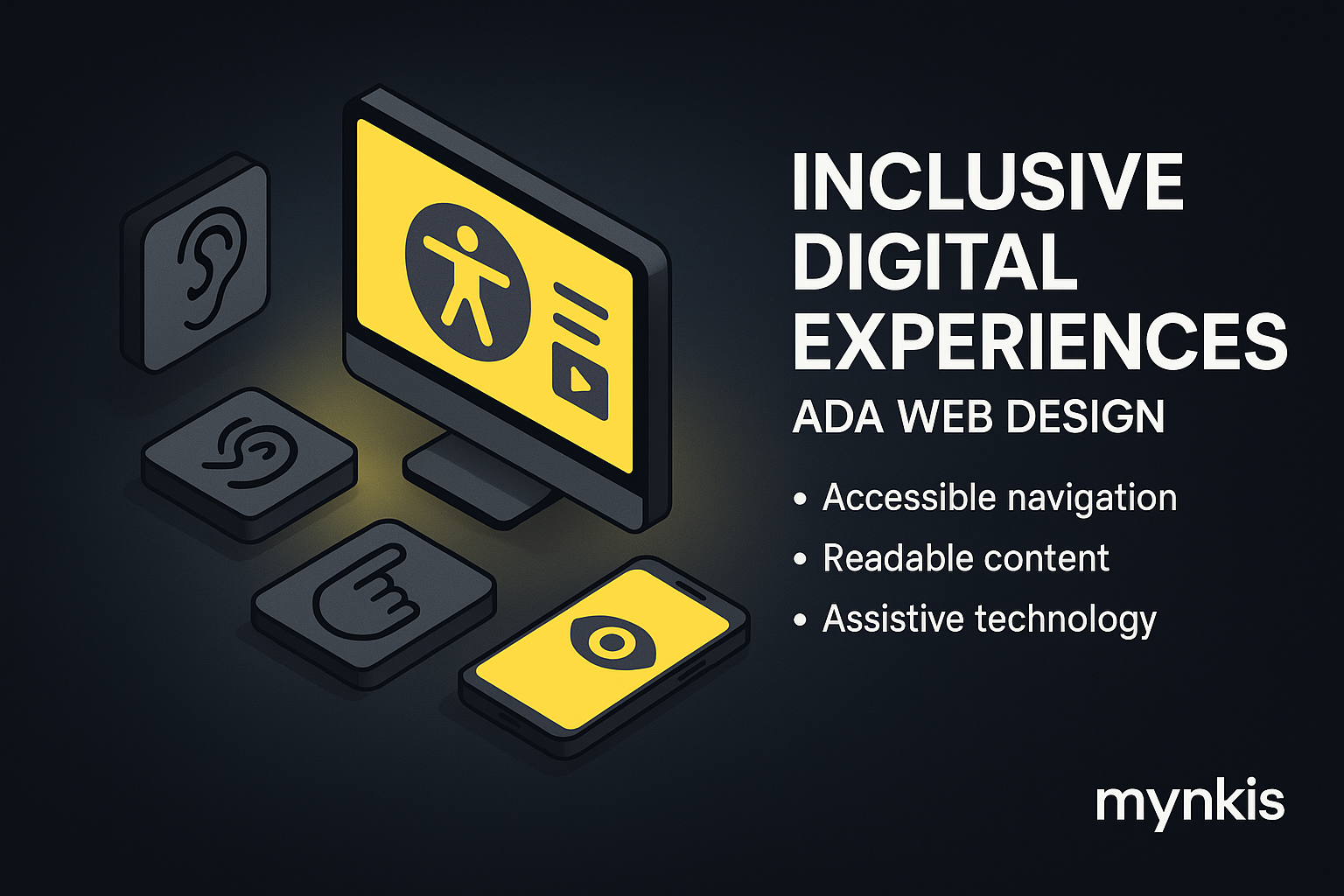Schedule a Demo
As web design evolves, our responsibility to make digital experiences accessible to all users, including those with disabilities, becomes paramount. I often engage with operations managers and IT leaders who express their growing understanding of how compliance with the Americans with Disabilities Act (ADA) not only broadens their audience but also reflects their commitment to inclusivity.
ADA compliance isn't just a checkbox in the world of web development; it's a testament to a business's dedication to universal access. At its core, ADA aims to ensure that public and private spaces, including digital spaces, accommodate individuals with disabilities.
Here's what ADA compliance entails in practical terms for websites and custom software applications: conforming to Web Content Accessibility Guidelines (WCAG). This set of guidelines is a global standard for designing web experiences that are perceivable, operable, understandable, and robust.
Perceivability in web design focuses on delivering content in ways that users can sense. For a clinic's website offering custom software development services, this means ensuring text alternatives for non-text content. I've advised many IT leaders on the importance of alt text for images and captions for videos, which opens up the digital health portal to users who rely on screen readers or have vision impairments.
Moving on to operability, our goal is to make the site easy to navigate. This involves creating a clear structure, with easy-to-use menus and buttons. For hospitals implementing new enterprise web solutions, keyboard accessibility can't be overlooked—those unable to use a mouse must still be able to access all functionalities. I often highlight to healthcare managers the necessity of this principle, as the software solutions we build must be seamless across different user abilities.
Another aspect is avoiding content that could cause seizures. This includes careful use of animations and ensuring no part of the page flashes more than three times per second. It's not uncommon for me to remind web development teams of this guideline when showcasing health analytics through interactive graphics.
Ensuring content is clear and consistent is crucial for users who may have cognitive or learning disabilities. Web design that follows ADA standards makes use of simple language, predictable navigation, and clear instructions. A hospital aiming to enhance patient engagement through custom software development could benefit greatly from such user-friendly design principles.
When I work with web developers for such institutions, we dedicate time to structuring content for easy consumption. This includes breaking up long blocks of text, using bullet points for lists, and utilizing headings properly to guide users through the information efficiently.
The concept of robustness ensures that the site's content is accessible now and into the future, supporting a wide range of assistive technologies. Here, I often suggest hospital IT managers invest in enterprise web solutions that are built with WCAG in mind to ensure their platforms remain viable as technology advances.
The journey toward ADA-compliant web design for healthcare institutions is multifaceted. First, teams should conduct an accessibility audit of existing digital assets, using tools that check for conformance to WCAG 2.0 or 2.1 standards. As someone who consults on such projects, I emphasize the importance of early identification of accessibility issues to prevent costly redesigns later.
From my experience, the next step is to weave accessibility into the design process. This involves assigning specific team members to advocate for accessibility, conducting regular testing with real users who have disabilities, and leveraging automated tools alongside manual checks. Trust me, the investment in this proactive approach dramatically decreases the risk of non-compliance and ensures the final product resonates with all users.
Beyond fulfilling legal obligations, ADA compliance brings significant advantages to healthcare providers. It promotes patient autonomy by enabling those with disabilities to access healthcare services independently. In my work with patient portal projects, I've seen how an accessible design empowers patients to manage their health effectively.
From an organizational perspective, embracing accessibility improves SEO, as search engines favor websites adhering to best practices in user experience. Hospitals embracing ADA standards not only expand their reach but also enhance their reputation as forward-thinking institutions in the healthcare space.
To illustrate, let's look at a case where a small clinic revamped its patient portal for custom software development. The clinic integrated feedback from visually impaired patients and collaborated with a seasoned enterprise web solutions provider, resulting in a robust, user-friendly system. This commitment to accessibility garnered the clinic positive feedback from the community and a noticeable increase in patient engagement.
The redesigned portal featured adjustable text sizes, high-contrast modes, and voice navigation options. The clinic reported a significant increase in the ease with which visually impaired patients could schedule appointments and access their health records, reinforcing the tangible benefits of ADA compliance.
Of course, the path to full compliance is strewn with challenges. Whether it's keeping up with evolving standards or retrofitting older systems, healthcare organizations must be vigilant. I advise my clients to think of ADA compliance as an ongoing journey rather than a destination. That might mean regular updates to the site based on the latest research or feedback, embodying a culture of continuous improvement.
Healthcare executives should view accessibility as a reflection of their organization’s values and a determinant of their business strategy. A robust accessible design doesn't just happen; it requires dedication, knowledge, and at times, outside expertise. While I can offer insights based on my experience, every institution might need tailored solutions, and this is where industry-specific guidance from organizations like the World Wide Web Consortium (W3C) becomes invaluable.
By striving towards adherence to ADA standards in web design, clinics and hospitals can ensure they're not leaving any patient behind. Emphasizing on accessible design creates a welcoming online environment—one that truly reflects the healing and supportive nature of healthcare.
